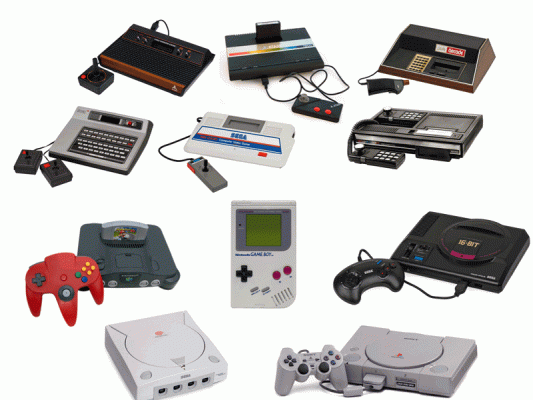With extremely powerful new consoles out there, replete with amazing lifelike graphics and all sorts of expansive games offering incredible potential and options, one has to wonder why retro gaming is so popular right now. While it might seem as though this trend has been built upon a few simple notions, the truth is that it is a fairly complex situation that features influence from multiple angles. We’re about to take a long, hard look at all of the major factors which have turned the retro scene into what it is today, from top to bottom…
Don’t forget about economics
One thing that a lot of people tend to forget about when postulating theories about social or market movements is often the baseline economics which are driving everything. In other words, there is a tendency for some to try to “create a bubble” wherein they try to avoid seeing the various factors which might drive consumers to engage in seemingly backward behavior(s), retro gaming being a good example of this. In short, the general idea is this – since the crash of 2008, many gamers have suffering economically and thusly have been looking for cheaper ways to get their interactive kicks. Naturally, retro resurgence would fit the bill in this regard. Think about it, why would a person even want to invest in a new shiny console with a paltry library of games which may or may not stand the test of time when they can snatch up an older unit with a dozen or more titles which have proven their mettle? The simple truth is that availability of consumer cash has much more to do with this than many might realize or be willing to admit.
Fashion and legacy
You know how the old saying goes, “hindsight is always 20/20”, which implies that as we move forward we’re often better able to see the actual value of things vs. our current perception. This sentiment can apply to anything, really, not just video games or consoles, of course, but clearly the analogy is there to be made. One could probably now make the argument that video games are transcending the label of mere mindless entertainment to become bona-fide pieces of “art”. As such, as the bulk of the gaming audience ages, things tend to take on a certain nostalgic slant (where people are eagerly seeking out those 10+ year old titles just to play through them “one more time”). In this sense, video gamers are etching out their very own legacy, of sorts.
Conversely, it could also be said that retro gaming is becoming fashionable in its own regard. No one ever said that there were rules with regards to game development or that in order to maintain or derive value a title MUST have been recently produced. Sometimes things can suddenly gain in value seemingly overnight for little to no reason at all. Literally, you might go to sleep one night and your favorite old game is nothing more than a memory and wake up the next day and discover that it has gained new favor (and new playthroughs of it are emerging in places like Twitch and / or Youtube). You could say that in cases such as this that FASHION is the source of excitement. More often than not this might be driven by some new or impending indie release, where the developer credits inspiration from some older game which in turn causes legions of fans to flock to check it out for themselves.
New gamers are born every minute
We should also consider the fact that new gamers are born every minute and that none of them generally start with Tetris, Super Mario Bros. or any of the other now classic games that all veterans have already experienced. Just like a sort of history lesson you’d get at school, these new gamers eventually tend to go back and explore this catalog, doing their homework, if you will. Just look at what Minecraft has done for “all things pixilated”, for instance.
A good idea is a good idea regardless of when it emerged
Lastly, we must also consider that good ideas and products are somewhat ageless. Just because a game system or a graphics engine is classified as being “obsolete” doesn’t mean that it is suddenly broken and useless. One could make the argument (successfully) that a solid idea is always going to be exactly that and no amount of time (relatively speaking, of course) could diminish its importance. There are lots of standout examples in this regard, titles like “Ocarina of Time” or the classic Resident Evil series immediately spring to mind, with legions of fans still eager to playthrough again and again. Similarly, one could use classical music as an example of this phenomenon as well (can we not agree that Mozart or Beethoven’s music still retains merit in our day even though newer music exists?).

Regardless of why retro gaming is so IN right now, perhaps the coolest thing about it is that it will eventually encapsulate everything…including what people currently consider to be “modern”. In this sense, it might actually be the most comprehensive and inclusive subdivision of gaming.
Which was your favourite retro console and game? Let us know in the comments below.

